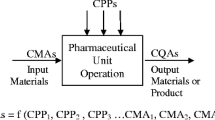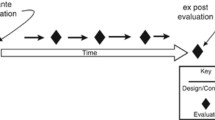Abstract
Product family design offers a cost-effective solution for providing a variety of products to meet the needs of diverse markets. At the beginning of product family design, designers must decide what can be shared among the product variants in a family. Optimal design formulations have been developed by researchers to find one optimal component sharing solution based on commonality, cost or technical performance of a product family. However, these optimization methods may not be able to apply in consumer product design because some metrics (e.g., visual appeal and ergonomics) of a consumer product cannot be formulized. In this paper, we suggest a tradeoff between commonality and the quality of the modular architecture in product family platform selection. We introduce a method for designers to identify multiple component sharing options that lie along a Pareto front of maximum commonality and strategic modularity. The component sharing options along the Pareto front can be evaluated, compared, and further modified. We demonstrate the method using a case study of product family platform selection of high-end and low-end impact drivers and electric drills. In the case study, the quality of the modular architecture is evaluated using a design structure matrix (DSM) for each of product variants. Three architectures along the Pareto front with maximum commonality, optimal modularity, and a balanced solution of the two metrics are highlighted and further examined to validate the effectiveness of our method.












Similar content being viewed by others
References
AlGeddawy T, ElMaraghy H (2013) Optimum granularity level of modular product design architecture. CIRP Ann 62:151–154. https://doi.org/10.1016/j.cirp.2013.03.118
Bell ET (1934) Exponential numbers. Am Math Mon 41:411–419. https://doi.org/10.2307/2300300
Borjesson F, Hölttä-Otto K (2014) A module generation algorithm for product architecture based on component interactions and strategic drivers. Res Eng Des 25:31–51. https://doi.org/10.1007/s00163-013-0164-2
Braha D (2002) Partitioning tasks to product development teams. ASME DETC 2002:333–344 https://doi.org/10.1115/DETC2002/DTM-34031
Chiriac N, Hölttä-Otto K, Lysy D, Suk Suh E (2011) Level of modularity and different levels of system granularity. J Mech Des 133:101007. https://doi.org/10.1115/1.4005069
Eichstetter M, Müller S, Zimmermann M (2015) Product family design with solution spaces. J Mech Des 137:121401. https://doi.org/10.1115/1.4031637
Engel A, Reich Y (2015) Advancing architecture options theory: six industrial case studies. Syst Eng 18:396–414. https://doi.org/10.1002/sys.21312
Engel A, Browning TR, Reich Y (2017) Designing products for adaptability: insights from four industrial cases. Decis Sci 48:875–917. https://doi.org/10.1111/deci.12254
Eppinger SD, Browning TR (2012) Design structure matrix methods and applications. MIT press, Cambridge
Erens F, Verhulst K (1997) Architectures for product families. Comput Ind 33:165–178. https://doi.org/10.1016/S0166-3615(97)00022-5
Erixon G (1998) Modular function deployment: a method for product modularisation. Royal Inst. of Technology, Department of Manufacturing Systems, Assembly Systems Division
Fellini R, Kokkolaras M, Papalambros P, Perez-Duarte A (2004) Platform selection under performance bounds in optimal design of product families. J Mech Des 127:524–535. https://doi.org/10.1115/1.1899176
Fujita K, Yoshida H (2004) Product variety optimization simultaneously designing module combination and module attributes. Concurr Eng 12:105–118. https://doi.org/10.1177/1063293X04044758
Gebhardt N, Bahns T, Krause D (2014) An example of visually supported design of modular product families. Procedia CIRP 21:75–80. https://doi.org/10.1016/j.procir.2014.03.162
Gonzalez-Zugasti JP, Otto KN, Baker JD (2000) A method for architecting product platforms. Res Eng Des 12:61–72. https://doi.org/10.1007/s001630050024
Harlou U (2006) Developing product families based on architectures. Department of Mechanical Engineering, Technical University of Denmark
Helmer R, Yassine A, Meier C (2010) Systematic module and interface definition using component design structure matrix. J Eng Des 21:647–675. https://doi.org/10.1080/09544820802563226
Holtta KMM, Salonen MP (2003) Comparing three different modularity methods. ASME DETC 2003:533–541 https://doi.org/10.1115/DETC2003/DTM-48649
Jiao J, Simpson TW, Siddique Z (2007) Product family design and platform-based product development: a state-of-the-art review. J Intell Manuf 18:5–29. https://doi.org/10.1007/s10845-007-0003-2
Jose A, Tollenaere M (2005) Modular and platform methods for product family design: literature analysis. J Intell Manuf 16:371–390. https://doi.org/10.1007/s10845-005-7030-7
Jung S, Simpson TW (2016) An integrated approach to product family redesign using commonality and variety metrics. Res Eng Des 27:391–412. https://doi.org/10.1007/s00163-016-0224-5
Kim S, Moon SK (2017) Sustainable platform identification for product family design. J Clean Prod 143:567–581. https://doi.org/10.1016/j.jclepro.2016.12.073
Kim G, Kwon Y, Suh ES, Ahn J (2016) Analysis of architectural complexity for product family and platform. J Mech Des 138:071401. https://doi.org/10.1115/1.4033504
Koh ECY, Förg A, Kreimeyer M, Lienkamp M (2015) Using engineering change forecast to prioritise component modularisation. Res Eng Des 26:337–353. https://doi.org/10.1007/s00163-015-0200-5
Kristjansson AH, Jensen T, Hildre H-P (2004) The term platform in the context of a product developing company. In: DS 32: Proceedings of DESIGN 2004, the 8th International Design Conference, Dubrovnik
Lei N, Yao X, Moon SK, Bi G (2016) An additive manufacturing process model for product family design. J Eng Des 27:751–767. https://doi.org/10.1080/09544828.2016.1228101
Liu Z, Wong YS, Lee KS (2011) A manufacturing-oriented approach for multi-platforming product family design with modified genetic algorithm. J Intell Manuf 22:891–907. https://doi.org/10.1007/s10845-009-0365-8
Ma J, Kim HM (2016) Product family architecture design with predictive, data-driven product family design method. Res Eng Des 27:5–21. https://doi.org/10.1007/s00163-015-0201-4
Meyer MH, Lehnerd AP (1997) The power of product platforms. Simon and Schuster, New York
Meyer MH, Utterback JM (1993) The product family and the dynamics of core capability. Sloan Manag Rev 34:29–47
Moon SK, Park KJ, Simpson TW (2014) Platform design variable identification for a product family using multi-objective particle swarm optimization. Res Eng Des 25:95–108. https://doi.org/10.1007/s00163-013-0166-0
Nelson IISA., Parkinson MB, Papalambros PY (2000) Multicriteria optimization in product platform design. J Mech Des 123:199–204. https://doi.org/10.1115/1.1355775
Östgren B (1994) Modularisation of the product gives effects in the entire production. The Royal Institute of Technology, Stockholm
Otto KN, Wood KL (2001) Product design: techniques in reverse engineering and new product development. Vol book, whole. Prentice-Hall, Inc., Upper Saddle River
Pirmoradi Z, Wang GG, Simpson TW (2014) A review of recent literature in product family design and platform-based product development. In: Simpson TW, Jiao J, Siddique Z, Hölttä-Otto K (eds) Advances in product family and product platform design: methods & applications. Springer New York, New York, pp 1–46. https://doi.org/10.1007/978-1-4614-7937-6_1
Robertson D, Ulrich K (1998) Planning for product platforms. Sloan Manag Rev 39:19–31
Simpson TW, Siddique Z, Jiao RJ (2006) Product platform and product family design: methods and applications. Springer Science & Business Media, New York
Simpson TW, Jiao J, Siddique Z, Hölttä-Otto K (2014) Advances in product family and product platform design. Springer, New York
Steward DV (1981) The design structure system: a method for managing the design of complex systems. IEEE Trans Eng Manag 28:71–74. https://doi.org/10.1109/TEM.1981.6448589
Stone RB, Wood KL, Crawford RH (2000) Using quantitative functional models to develop product architectures. Des Stud 21:239–260. https://doi.org/10.1016/S0142-694X(99)00008-3
Thebeau RE (2001) Knowledge management of system interfaces and interactions from product development processes. Massachusetts Institute of Technology, Cambridge
Thevenot HJ, Simpson TW (2006) Commonality indices for product family design: a detailed comparison. J Eng Des 17:99–119. https://doi.org/10.1080/09544820500275693
Ulrich K (1994) Fundamentals of product modularity. In: Dasu S, Eastman C (eds) Management of design: engineering and management perspectives. Springer Netherlands, Dordrecht, pp 219–231. https://doi.org/10.1007/978-94-011-1390-8_12
Wacker JG, Treleven M (1986) Component part standardization: an analysis of commonality sources and indices. J Oper Manag 6:219–244. https://doi.org/10.1016/0272-6963(86)90026-4
Wang D, Du G, Jiao RJ, Wu R, Yu J, Yang D (2016) A Stackelberg game theoretic model for optimizing product family architecting with supply chain consideration. Int J Prod Econ 172:1–18. https://doi.org/10.1016/j.ijpe.2015.11.001
Yassine A, Braha D (2003) Complex concurrent engineering and the design structure matrix method. Concurr Eng 11:165–176. https://doi.org/10.1177/106329303034503
Yu T-L, Yassine AA, Goldberg DE (2007) An information theoretic method for developing modular architectures using genetic algorithms. Res Eng Des 18:91–109. https://doi.org/10.1007/s00163-007-0030-1
Zamirowski EJ, Otto KN (1999) Identifying product family architecture modularity using function and variety heuristics. In: 11th International Conference on Design Theory and Methodology, ASME, Las Vegas
Acknowledgements
This material is based in part on work supported by the National Science Foundation under Award number CMMI-1200256. Any opinions, findings, and conclusions or recommendations expressed in this material are those of the authors and do not necessarily reflect the views of the National Science Foundation.
Author information
Authors and Affiliations
Corresponding author
Additional information
Publisher’s Note
Springer Nature remains neutral with regard to jurisdictional claims in published maps and institutional affiliations.
Appendices
Appendix A: The product–component matrix (PCM) of the power tool product family
Table 8 displays the transposed PCM for the power tool case study referenced in Sect. 4. It contains the list of components that constitute each of the product variants in the case study.
Appendix B: Optimal component clusters of product variants in the power tool product family
Figure 13 shows the optimal clusters of product variants in the power tool case study referenced in Sect. 4. Each modular architecture alternative was compared with the clustering costs of this optimal clustering to calculate the modularity scores of the product variants and the product family.
Rights and permissions
About this article
Cite this article
Baylis, K., Zhang, G. & McAdams, D.A. Product family platform selection using a Pareto front of maximum commonality and strategic modularity. Res Eng Design 29, 547–563 (2018). https://doi.org/10.1007/s00163-018-0288-5
Received:
Revised:
Accepted:
Published:
Issue Date:
DOI: https://doi.org/10.1007/s00163-018-0288-5





